I finished my season guiding aurora borealis expeditions for Natural Habitat a few weeks ago. The weather was thrillingly brutal, with one of the longest cold snaps in recent history, with wind chills as low as -61 Fahrenheit! I did get good aurora shows on all three of my trips. The following is a time-lapse sequence from one of the best nights of the season.
I will admit that this isn’t a great quality time-lapse. I manually took continuous images during a few of the more active periods of the night. I should have kept the camera in the same place the entire night to achieve a smoother, more complete sequence. To create this I simply bulk processed a few series of images in lightroom, and imported the JPEGS into IMovie, saved the file as a 9 minute clip, then started a new project, imported the clip, compressed the time, and saved it as a new video. This was much quicker and easier than a time lapse I did years ago which is embedded below.
For this sequence you can see the camera was not moved for about 3 hours. To create this time-lapse I created the video file as a compressed slide show in Lightroom, with the help of a plug-in called LRTimelapse. Many cameras can do a time lapse automatically in the camera itself, but I haven’t tried this because each image must be processed in Lightroom to achieve higher quality, so I cant imagine the product would be very good, but it would save lots of work.
While aurora time-lapses do not accurately portray what the human eye sees in real time, it does illustrate how dynamic auroral displays are. Aurora Borealis is certainly one of the earth’s most magnificent phenomena and I encourage everyone to experience it first hand.
Keep exploring! Brad
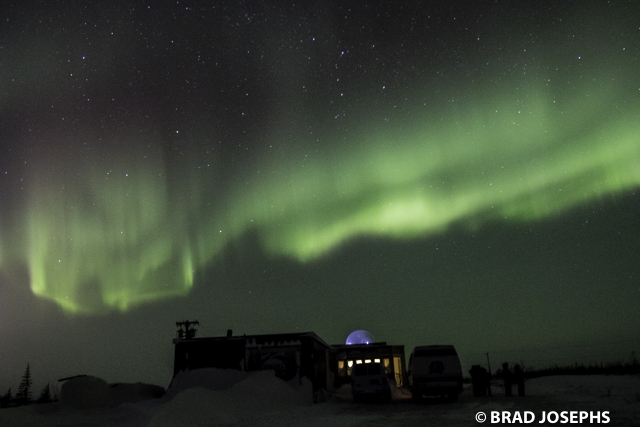
The building in this image is the Aurora Domes. You can see one of the domes lit in blue light on the roof. F2.8, 4 second exposure, ISO 3200.
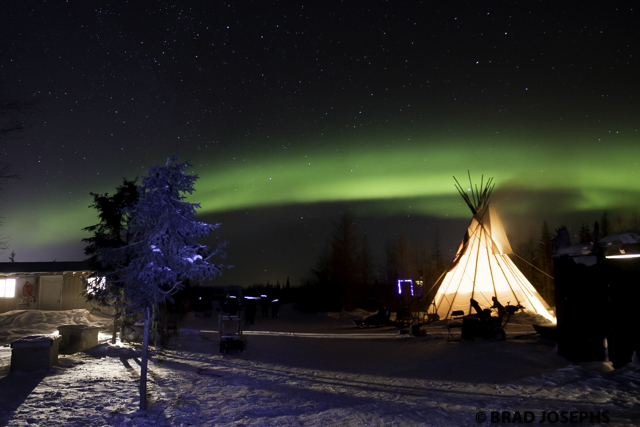
Aurora over Dave Daly’s dog mushing camp in the Boreal Forest southeast of Churchill. Notice the traditional Metis teepee lit with a fire inside.

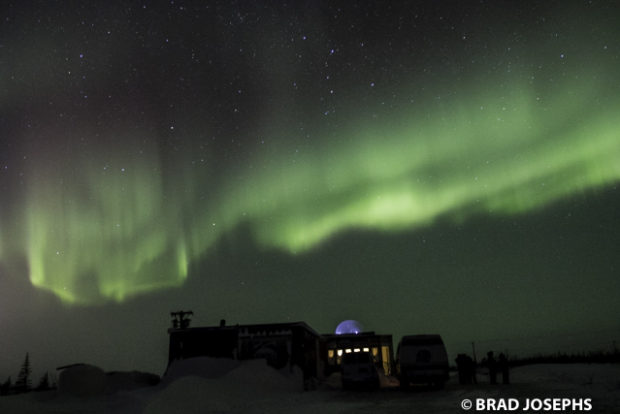

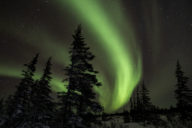
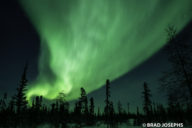
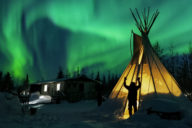
1 Comment
Awesome write up and also really like the write up on “Aurora Photography 101” . Fabulous usefully tips and instructions. Thank you !!